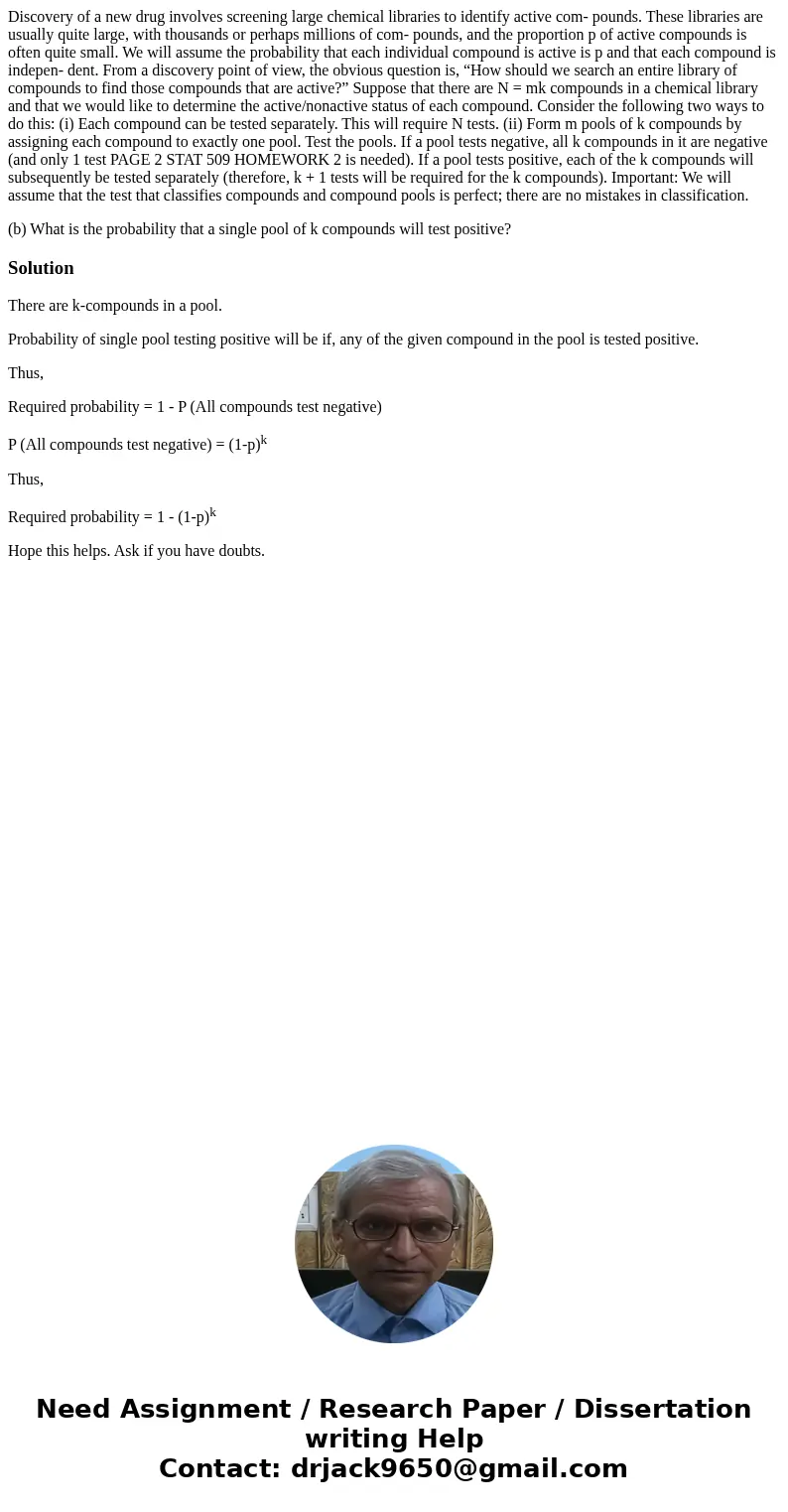Discovery of a new drug involves screening large chemical li
Discovery of a new drug involves screening large chemical libraries to identify active com- pounds. These libraries are usually quite large, with thousands or perhaps millions of com- pounds, and the proportion p of active compounds is often quite small. We will assume the probability that each individual compound is active is p and that each compound is indepen- dent. From a discovery point of view, the obvious question is, “How should we search an entire library of compounds to find those compounds that are active?” Suppose that there are N = mk compounds in a chemical library and that we would like to determine the active/nonactive status of each compound. Consider the following two ways to do this: (i) Each compound can be tested separately. This will require N tests. (ii) Form m pools of k compounds by assigning each compound to exactly one pool. Test the pools. If a pool tests negative, all k compounds in it are negative (and only 1 test PAGE 2 STAT 509 HOMEWORK 2 is needed). If a pool tests positive, each of the k compounds will subsequently be tested separately (therefore, k + 1 tests will be required for the k compounds). Important: We will assume that the test that classifies compounds and compound pools is perfect; there are no mistakes in classification.
(b) What is the probability that a single pool of k compounds will test positive?
Solution
There are k-compounds in a pool.
Probability of single pool testing positive will be if, any of the given compound in the pool is tested positive.
Thus,
Required probability = 1 - P (All compounds test negative)
P (All compounds test negative) = (1-p)k
Thus,
Required probability = 1 - (1-p)k
Hope this helps. Ask if you have doubts.

 Homework Sourse
Homework Sourse